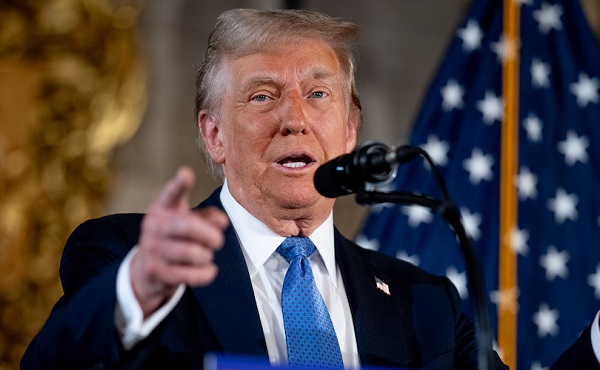Business
Sunrise Calgary – The Dawn Of A New Energy Reality

It is an indisputable fact that the dynamism of the global energy industry, and more specifically within the oil and gas sub-sector, is undergoing a fundamental change. This change has, without a doubt, been felt in Alberta, Canada’s, and one of the world’s, largest producers of oil and gas. Moreover, technological advancements and constantly shifting political policies have further influenced the energy sector; the political and economic drumbeats to transition to cheaper, less polluting renewable energy sources have been deafening and Alberta has had its fair share of that.
And therein lies a great opportunity for Alberta, and more specifically for the city of Calgary. Faced with mounting challenges of getting its oil and gas to market, Alberta has had to rethink its energy strategy. This presents a wonderful opportunity for the province to exploit renewable energy sources to not only power the province’s economy, but the national economy as well.
Renewable energy in Alberta
Wind power is, without a doubt, one of the biggest renewable energy sources harnessed in Alberta, however, there lies a bigger potential for the province and more specifically for the City of Calgary to tap into solar energy. According to data from Environment Canada, Calgary is the sunniest city in Canada receiving up to 2,396 hours of sunshine, averaging 52 per cent of sunny daylight hours spread out over 333 days in a year. This makes Calgary an ideal location to set up solar energy farms to not only power homes and businesses in Calgary and Alberta, but export the energy to colder places across Canada.
There is currently an installed capacity of about 4,000MW of wind power in Alberta while solar energy capacity still lags behind. However, according to industry experts, an installed capacity of 4,000MW of solar energy power in the province will generate and support an additional 8,800 full time jobs.
Solar farms in Calgary
The appetite to develop solar energy farms around the city of Calgary has been insatiable. Over the recent past, local and global energy companies have sought and expressed interest in developing solar energy farms around the city. Once idle lands on the outskirts of Calgary are today transformed into thriving solar energy farms that hold the promise to holistically transform the energy and socio-economic status of not only Calgary, but Alberta and Canada in general.
Government policies and technological advancements over the recent years gives solar energy development in Calgary a shot in the arm. This is after the Canadian Government made a commitment to switch to powering its buildings and operations with renewable energy by 2025, on the one hand, and the technological advancements made in developing cheaper solar panels, on the other. These factors make solar energy production in Calgary more feasible.
Currently, renewable energy sources contribute a paltry three per cent of Canada’s energy consumption. However, this figure is set to rise with the renewed interest to develop solar energy farms around Calgary.
Business
Trump confirms 35% tariff on Canada, warns more could come

Quick Hit:
President Trump on Thursday confirmed a sweeping new 35% tariff on Canadian imports starting August 1, citing Canada’s failure to curb fentanyl trafficking and retaliatory trade actions.
Key Details:
- In a letter to Canadian Prime Minister Mark Carney, Trump said the new 35% levy is in response to Canada’s “financial retaliation” and its inability to stop fentanyl from reaching the U.S.
- Trump emphasized that Canadian businesses that relocate manufacturing to the U.S. will be exempt and promised expedited approvals for such moves.
- The administration has already notified 23 countries of impending tariffs following the expiration of a 90-day negotiation window under Trump’s “Liberation Day” trade policy.
Diving Deeper:
President Trump escalated his tariff strategy on Thursday, formally announcing a 35% duty on all Canadian imports effective August 1. The move follows what Trump described as a breakdown in trade cooperation and a failure by Canada to address its role in the U.S. fentanyl crisis.
“It is a Great Honor for me to send you this letter in that it demonstrates the strength and commitment of our Trading Relationship,” Trump wrote to Prime Minister Mark Carney. He added that the tariff response comes after Canada “financially retaliated” against the U.S. rather than working to resolve the flow of fentanyl across the northern border.
Trump’s letter made clear the tariff will apply broadly, separate from any existing sector-specific levies, and included a warning that “goods transshipped to evade this higher Tariff will be subject to that higher Tariff.” The president also hinted that further retaliation from Canada could push rates even higher.
However, Trump left the door open for possible revisions. “If Canada works with me to stop the flow of Fentanyl, we will, perhaps, consider an adjustment to this letter,” he said, adding that tariffs “may be modified, upward or downward, depending on our relationship.”
Canadian companies that move operations to the U.S. would be exempt, Trump said, noting his administration “will do everything possible to get approvals quickly, professionally, and routinely — In other words, in a matter of weeks.”
The U.S. traded over $762 billion in goods with Canada in 2024, with a trade deficit of $63.3 billion, a figure Trump called a “major threat” to both the economy and national security.
Speaking with NBC News on Thursday, Trump suggested even broader tariff hikes are coming, floating the idea of a 15% or 20% blanket rate on all imports. “We’re just going to say all of the remaining countries are going to pay,” he told Meet the Press moderator Kristen Welker, adding that “the tariffs have been very well-received” and noting that the stock market had hit new highs that day.
The Canadian announcement is part of a broader global tariff rollout. In recent days, Trump has notified at least 23 countries of new levies and revealed a separate 50% tariff on copper imports.
“Not everybody has to get a letter,” Trump said when asked if other leaders would be formally notified. “You know that. We’re just setting our tariffs.”
Business
Trump slaps Brazil with tariffs over social media censorship

From LifeSiteNews
By Dan Frieth
In his letter dated July 9, 2025, addressed to President Luiz Inácio Lula da Silva, Trump ties new U.S. trade measures directly to Brazilian censorship.
U.S. President Donald Trump has launched a fierce rebuke of Brazil’s moves to silence American-run social media platforms, particularly Rumble and X.
In his letter dated July 9, 2025, addressed to President Luiz Inácio Lula da Silva, Trump ties new U.S. trade measures directly to Brazilian censorship.
He calls attention to “SECRET and UNLAWFUL Censorship Orders to U.S. Social Media platforms,” pointing out that Brazil’s Supreme Court has been “threatening them with Millions of Dollars in Fines and Eviction from the Brazilian Social Media market.”


Trump warns that these actions are “due in part to Brazil’s insidious attacks on Free Elections, and the fundamental Free Speech Rights of Americans,” and states: “starting on August 1, 2025, we will charge Brazil a Tariff of 50% on any and all Brazilian products sent into the United States, separate from all Sectoral Tariffs.” He also adds that “Goods transshipped to evade this 50% Tariff will be subject to that higher Tariff.”
Brazil’s crackdown has targeted Rumble after it refused to comply with orders to block the account of Allan dos Santos, a Brazilian streamer living in the United States.
On February 21, 2025, Justice Alexandre de Moraes ordered Rumble’s suspension for non‑compliance, saying it failed “to comply with court orders.”
Earlier, from August to October 2024, Moraes had similarly ordered a nationwide block on X.
The court directed ISPs to suspend access and imposed fines after the platform refused to designate a legal representative and remove certain accounts.
Elon Musk responded: “Free speech is the bedrock of democracy and an unelected pseudo‑judge in Brazil is destroying it for political purposes.”
By linking censorship actions, particularly those targeting Rumble and X, to U.S. trade policy, Trump’s letter asserts that Brazil’s judiciary has moved into the arena of foreign policy and economic consequences.
The tariffs, he makes clear, are meant, at least in part, as a response to Brazil’s suppression of American free speech.
Trump’s decision to impose tariffs on Brazil for censoring American platforms may also serve as a clear signal to the European Union, which is advancing similar regulatory efforts under the guise of “disinformation” and “online safety.”
With the EU’s Digital Services Act and proposed “hate speech” legislation expanding government authority over content moderation, American companies face mounting pressure to comply with vague and sweeping takedown demands.
By framing censorship as a violation of U.S. free speech rights and linking it to trade consequences, Trump is effectively warning that any foreign attempt to suppress American voices or platforms could trigger similar economic retaliation.
Reprinted with permission from Reclaim The Net.
-

 Bruce Dowbiggin2 days ago
Bruce Dowbiggin2 days agoThe Covid 19 Disaster: When Do We Get The Apologies?
-

 Crime1 day ago
Crime1 day agoSweeping Boston Indictment Points to Vast Chinese Narco-Smuggling and Illegal Alien Labor Plot via Mexican Border
-

 Alberta1 day ago
Alberta1 day agoAlberta school boards required to meet new standards for school library materials with regard to sexual content
-

 Business15 hours ago
Business15 hours agoTrump slaps Brazil with tariffs over social media censorship
-

 Environment1 day ago
Environment1 day agoEPA releases report on chemtrails, climate manipulation
-

 International15 hours ago
International15 hours agoSupport for the Ukraine war continues because no one elected is actually in charge.
-

 Addictions17 hours ago
Addictions17 hours agoCan addiction be predicted—and prevented?
-

 Business18 hours ago
Business18 hours agoCBC six-figure salaries soar



